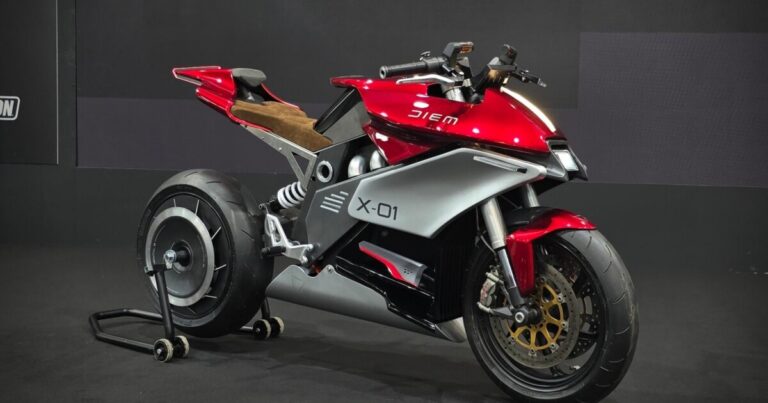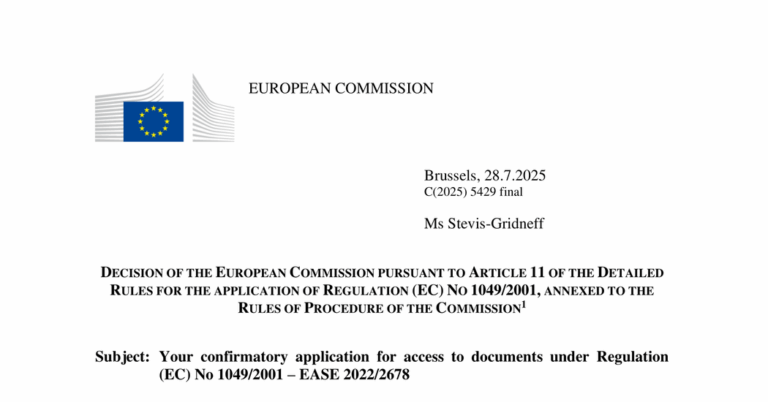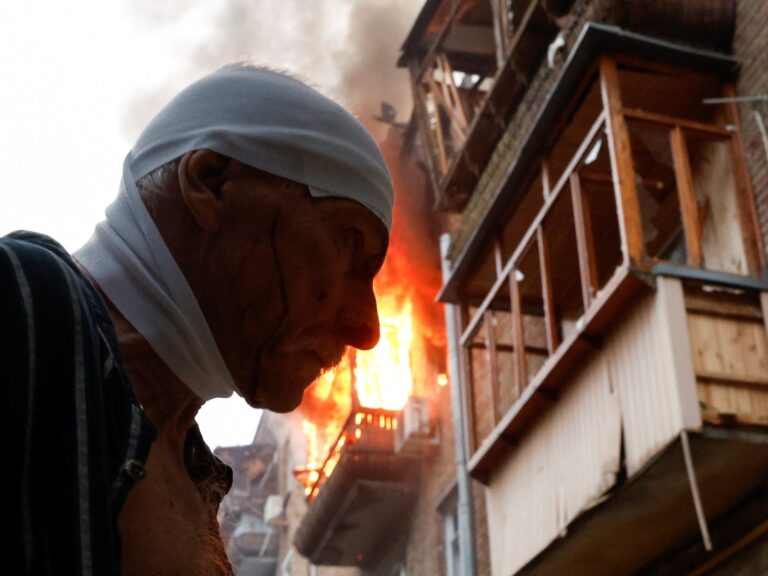Ameren Q2 2025 slides: EPS growth continues as data center investments accelerate
Recap of Day 6 Finals at the 2025 World Championships
By James Sutherland on SwimSwam

2025 World Championships
- July 27 – August 3, 2025 (pool swimming)
- Singapore, Singapore
- World Aquatics Championships Arena
- LCM (50m)
- Meet Central
- How To Watch
- SwimSwam Preview Index
- Entry Book
- Live Results
- Live Recaps
DAY 6 FINALS HEAT SHEET
Event Schedule:
- Women’s 100 free final
- Men’s 100 fly semi-finals
- Women’s 200 back semi-finals
- Men’s 50 free semi-finals
- Men’s 200 breast final
- Men’s 200 back final
- Women’s 200 breast final
- Women’s 50 fly semi-finals
- Men’s 4×200 free relay final
Things will be fast paced on Day 6 of the 2025 World Championships as we’ve got four individual finals, four sets of semi-finals, and an exciting curtain call, the men’s 4×200 free relay, on the schedule tonight.
Things will kick off with the final of the women’s 100 freestyle, where Mollie O’Callaghan will be aiming to complete the 100/200 free double for the second time in her career after she swept the two events for the first time at the 2023 World Championships. The Australian could also win the world title in the 100 free for the third time after topping the podium in both 2022 and 2023.
Her main rival figures to be Dutchwoman Marrit Steenbergen, who was the only other swimmer to break 53 seconds in the semis, while American Torri Huske is one to watch as she’s the 2024 Olympic silver medalist, but has been battling illness all week.
In fact, Huske, O’Callaghan and Steenbergen are the only three women who were in last summer’s Olympic final who will be contesting the 100 free tonight in Singapore.
The next final of the night will be the men’s 200 breast, which looks wide open given the absence of reigning Olympic champion Leon Marchand and former world champion Zac Stubblety-Cook, while world record holder and 100 breast winner Qin Haiyang hasn’t looked his best over the 200 distance and barely squeaked into the final in 8th.
The top qualifier was Japan’s Ippei Watanabe in 2:08.01, with American AJ Pouch seeded 2nd and Olympic bronze medalist Caspar Corbeau in 3rd.
That will be followed by the men’s 200 back, which has leveled up over the last 12 months with four swimmers breaking 1:55 in the semis and 1:55.6 being required to earn a lane in the final. Last summer in Paris, only the three medalists broke 1:55 in the final, and 1:56.52 was good enough to crack the top eight.
Leading the field is South African Pieter Coetze, who followed up his 100 back victory by shattering the African Record in the 200 in a time of 1:54.22, while France’s Yohann Ndoye-Brouard (1:54.47), Switzerland’s Roman Mityukov (1:54.83), Canada’s Blake Tierney (1:55.03) and the Czech Republic’s Jan Cejka (1:55.46) also set National Records to advance to the final.
Qualifying 3rd overall was Hungarian Hubert Kos, the reigning Olympic champion and 2023 world champion, who put up a time of 1:54.64 shortly after winning bronze in the 200 IM last night.
The last individual final of the night will be the women’s 200 breast, where we’ll see Olympic champion Kate Douglass and world record holder Evgeniia Chikunova go head-to-head for gold.
The two of them have distanced themselves from the rest of the field heading into the final, with Chikunova qualifying 1st out of the semis in 2:20.65, while Douglass cruised through to win her semi in 2:20.96 and advance in 2nd.
The night will close with the men’s 4×200 free relay, where Great Britain comes in as the team to beat after winning the world title in 2023 and then following up with Olympic gold last summer in Paris. The U.S. team looks to be formidable, however, led by 200 free silver medalist Luke Hobson, who will swim third along with Henry McFadden, Gabriel Jett and Rex Maurer.
Great Britain is using Jack McMillan after his 1:45.28 lead-off in the prelims, taking over for a mainstay on the relay, Tom Dean, who split 1:46.35 in the morning, and joining Matt Richards, James Guy and Duncan Scott.
Leon Marchand will be swimming the anchor leg for the French team out in Lane 8.
We’ll also see semi-final heats in the men’s 50 free and 100 fly, and the women’s 200 back and 50 fly.
WOMEN’S 100 FREESTYLE – FINAL
- World Record: 51.71, Sarah Sjostrom (SWE) – 2017
- World Junior Record: 52.70, Penny Oleksiak (CAN) – 2016
- Championship Record: 51.71, Sarah Sjostrom (SWE) – 2017
- 2023 World Champion: Mollie O’Callaghan (AUS), 52.16
- 2024 Olympic Champion: Sarah Sjostrom (SWE), 52.16
MEN’S 100 BUTTERFLY – SEMI-FINALS
- World Record: 49.45, Caeleb Dressel (USA) – 2021
- World Junior Record: 50.62, Kristof Milak (HUN) – 2017
- Championship Record: 49.50, Caeleb Dressel (USA) – 2019
- 2023 World Champion: Maxime Grousset (FRA), 50.14
- 2024 Olympic Champion: Kristof Milak (HUN), 49.90
Top 8 Qualifiers:
WOMEN’S 200 BACKSTROKE – SEMI-FINALS
- World Record: 2:03.14, Kaylee McKeown (AUS) – 2023
- World Junior Record: 2:03.35, Regan Smith (USA) – 2019
- Championship Record: 2:03.35, Regan Smith (USA) – 2019
- 2023 World Champion: Kaylee McKeown (AUS), 2:03.85
- 2024 Olympic Champion: Kaylee McKeown (AUS), 2:03.73
Top 8 Qualifiers:
MEN’S 50 FREESTYLE – SEMI-FINALS
- World Record: 20.91, Cesar Cielo (BRA) – 2009
- World Junior Record: 21.75, Michael Andrew (USA) – 2017
- Championship Record: 21.04, Caeleb Dressel (USA) – 2019
- 2023 World Champion: Cameron McEvoy (AUS), 21.06
- 2024 Olympic Champion: Cameron McEvoy (AUS), 21.25
Top 8 Qualifiers:
MEN’S 200 BREASTSTROKE – FINAL
- World Record: 2:05.48, Qin Haiyang (CHN) – 2023
- World Junior Record: 2:06.91, Shin Ohashi (JPN) – 2025
- Championship Record: 2:05.48, Qin Haiyang (CHN) – 2023
- 2023 World Champion: Qin Haiyang (CHN), 2:05.48
- 2024 Olympic Champion: Leon Marchand (FRA), 2:05.85
MEN’S 200 BACKSTROKE – FINAL
- World Record: 1:51.92, Aaron Peirsol (USA) – 2009
- World Junior Record: 1:55.14, Kliment Kolesnikov (RUS) – 2017
- Championship Record: 1:51.92, Aaron Peirsol (USA) – 2009
- 2023 World Champion: Hubert Kos (HUN), 1:54.14
- 2024 Olympic Champion: Hubert Kos (HUN), 1:54.26
WOMEN’S 200 BREASTSTROKE – FINAL
- World Record: 2:17.55, Evgeniia Chikunova (RUS) – 2023
- World Junior Record: 2:19.64, Viktoriya Zeynep Gunes (TUR) – 2015
- Championship Record: 2:19.11, Rikke Pedersen (DEN) – 2013
- 2023 World Champion: Tatjana Smith (RSA), 2:20.80
- 2024 Olympic Champion: Kate Douglass (USA), 2:19.24
WOMEN’S 50 BUTTERFLY – SEMI-FINALS
- World Record: 24.43, Sarah Sjostrom (SWE) – 2014
- World Junior Record: 25.46, Rikako Ikee (JPN) – 2017
- Championship Record: 24.60, Sarah Sjostrom (SWE) – 2017
- 2023 World Champion: Sarah Sjostrom (SWE), 24.77
Top 8 Qualifiers:
MEN’S 4X200 FREESTYLE RELAY – FINAL
- World Record: 6:58.55, United States – 2009
- World Junior Record: 7:08.37, United States – 2019
- Championship Record: 6:58.55, United States – 2009
- 2023 World Champion: Great Britain, 6:59.08
- 2024 Olympic Champion: Great Britain, 6:59.43
Read the full story on SwimSwam: 2025 World Championships: Day 6 Finals Live Recap
Diem Motors introduces stylish X-01 electric concept motorcycle
Another EV company has entered the game, this time from Denmark. Diem Motors has just unveiled its first concept bike, the X-01. And I must admit, it’s a pretty little thing.
Diem was founded by Daniel Kemnitz and Manvendra Shaktawat, both seasoned designers with experience working alongside companies such as Red Bull Advanced Technologies, BMW, Tata, and Piaggio. The X-01 is the startup’s debut machine.
It embraces a fresh approach to engineering and design, with a single-beam frame, a hub-mounted axial flux motor, and a single-sided swingarm – all of which give it a sleek, modern look. But perhaps what really works in its favor is that it doesn’t try to mimic other electric motos on the market.
Diem Motors
The axial-flux hub motor directly powers the rear wheel – an unusual but effective choice. It produces around 47 horsepower, which should be more than enough for everyday riding. That said, the hub placement might raise concerns around unsprung weight, which could affect handling.
Aside from that, there are no exposed sprockets, no chain, and no gearbox, meaning you’ll likely spend more time riding and less time maintaining the bike.
And if you’re assuming they skimped on components like many electric moto prototypes, you’d be wrong. The X-01 is equipped with a fully functional TFT display, LED lighting, a Showa inverted fork, and Brembo brakes.
What’s more, Diem develops key components, including the frame, motor, and battery, in-house. This helps ensure quality control, hardware optimization, and software integration remain a crucial part of the production process.

Diem Motors
Aesthetically, it’s an impressive package. From the side, it reminds me of the Indian-made Ultraviolette F99 and the short-lived Aston Martin AMB 001 – clean lines, minimal clutter, and a sporty, futuristic silhouette.
But for now, that’s about all we can say. There’s no official word on detailed specifications, production plans, or release dates. We don’t even know if it will make it to production – and we’ve seen far too many EV startups make big promises, only to fade into obscurity.
Still, Diem seems serious. The company is focused on refining the bike and, more importantly, finding the right partners to bring the prototype to market.

Diem Motors
It’s also refreshing that the team isn’t making grandiose claims about “revolutionizing” the industry. The X-01 was quietly unveiled in Berlin without much fanfare or marketing bluster in June, following its first appearance on stage at the MBE trade show in Verona in January. So for now, we’ll wait for real-world tests or official specs before forming a final opinion.
Source: Diem Motors
The Far Right: Poland’s Growing Anti-Migrant Anger and Scapegoating
It started with a violent crime. In June, in the centre of Torun, central-north Poland, a Venezuelan man stabbed 24-year-old Klaudia, a Polish woman, to death as she was walking home from work through a park.
That horrific incident led to a silent march by thousands of protesters through Torun on Sunday, July 6. Local media reported that the march had been organised by supporters of the far-right Konfederacja political alliance and people carried signs saying “stop illegal immigration”.
Then came the rumours and misinformation. On July 14, someone in Walbrzych, southwestern Poland, called the police to report a Paraguayan man who had allegedly taken pictures of children on a playground.
The police stopped the man but did not find anything incriminating on his phone. That didn’t stop two Polish men from beating him up soon afterwards. And, the next day, a group of about 50 people stormed the hostel he and other migrants were living in. Some people threw flares into the building, and the owner has since been forced to close the hostel down.
In recent weeks, anti-migrant sentiment in Poland has been on the rise, spurred by far-right rhetoric, which asserts that Poland has been flooded with “unconstrained illegal migration”. Claims that migrants take local jobs and that they pose a threat to Poles both physically and figuratively, with their “foreign lifestyle”, are common and even encouraged by lawmakers.
One MP from Konfederacja – Konrad Berkowicz from Krakow – told TOK FM radio: “Xenophobia is an important element of our national unity. Condemning xenophobia and stifling it in the West has led to rapes and terrorist acts, that’s why we should cherish xenophobia.”
Elmi Abdi, 62, a Somali who came to Poland in 1996 as a refugee, told Al Jazeera: “Today, migrants are seen as responsible for all of Poland’s problems; we are scapegoats that all parties attack, even though politicians know it’s all untrue.” Today, Abdi is head of the Good Start foundation, which supports migrants, offering help with access to language classes, legal assistance and other matters.
“It is sad because we [immigrants] do everything to work safely here, pay taxes, and integrate into society.”
As misinformation – such as in the Walbrzych incident – about immigrants spreads, the Polish Migration Forum, a rights group, has called the atmosphere in Poland “pre-pogrom-like”.
“What distinguishes today’s situation is the violence. We are in a very bad place,” said Agnieszka Kosowicz, head of the forum. “Acts of violence already take place, people are subject to insults, threats and displays of hostility and contempt. This is a very alarming situation that requires a decisive response from the state.”
Rumours of ‘illegal returns’
On July 7, Poland reinstated border controls with Germany and Lithuania. That followed similar restrictions Germany imposed earlier in the year to discourage asylum seekers from entering through Poland.
Poland is also now actively monitoring the return of migrants – both asylum and non-asylum seekers – by the German police, as per European Union rules. These are people who arrived in Poland from outside the EU before crossing to Germany.
These returns of migrants by the German authorities are legal, but as rumours on the internet about “illegal returns” of migrants continue to spread, unofficial, far-right patrols have appeared at the borders to monitor the situation and make “citizen arrests” of individuals they believe to be entering the country illegally – so far without much success.
The EU accused Belarusian and Russian authorities of fomenting the EU’s migration crisis to destabilise the continent, by encouraging people from the Global South to travel to Belarus and then onwards into Europe via Poland.
In 2022, Poland built a fence along the border with Belarus to prevent migrants from entering the country irregularly. The fence, however, did little to physically stop migrants from coming in.
So, in March this year, Poland suspended the right to claim asylum altogether in a bid to deter people from coming.
All of this has served to stir up anti-migrant fear in Poland, which has been further amplified by far-right groups for their own political purposes.

‘We are being humiliated’
The hysteria reached a new high nearly two weeks ago, when, on Saturday, July 19, anti-migrant marches organised by the far-right Konfederacja party and football fans swept through 80 Polish towns and cities, shouting racist slurs and slogans.
Sixteen-year-old Nikola, who did not want to give her surname, told Al Jazeera that she had travelled 125km (80 miles) from her home in Gorlice, southern Poland, to attend the march in Krakow. She said she came along after watching videos on YouTube claiming that, in Western Europe, people are “afraid to leave their homes” because of the number of undocumented immigrants.
She said it was important to her to join a cause that “unites Poles today”.
“I wanted to be part of a community. People are showing those at the top that they care about security and that Poland is our country. We should do everything we can to prevent what’s happening in Western Europe,” she said.
“I’d like to feel safe in my city, and I’ve already seen a few people who looked like they are not from here,” she added.
On the march, Nikola joined a large column of several hundred people, many of them wearing Polish patriotic T-shirts and emblems of the Wisla football club, walking to Market Square. On the way, they passed tourists, some of whom were filming the protesters.
Three elderly women proudly waved white-and-red Polish flags among the football fans. “The nation has had enough of what’s happening. It’s waking up because we’re living under terror, being humiliated,” said Danuta, 60, who also did not want to give her full name. “The borders are not sealed and have to be defended by civilians,” she added, referring to the right-wing groups who patrol the Polish-German border.
On Market Square in the centre of the city, the march crossed paths with a smaller counterdemonstration organised by local left-wing groups, and the two groups exchanged insults while separated by the police.
The police did not record any major incidents during the day. But Abdi and other migrants Al Jazeera spoke with by telephone said they did not dare to leave their homes on Saturday.

Fake news fans the flames
According to experts, anti-migrant sentiment in Poland has been spurred by misinformation and fake news about the number of people entering the country, which does not reflect reality.
“Poland is not experiencing any large-scale irregular migration,” said Kosowicz. “Within the Dublin procedure [under EU rules], Germany returns people who claimed asylum in Poland and then crossed into Germany. In 2024, there were 688 such people, and this year – 318. This is nothing new.”
According to the International Migration Outlook report for 2024 from the Organisation for Economic Co-operation and Development (OECD), 2.2 percent of Poland’s population was foreign-born in 2023. This is low compared with other European countries such as the UK (15.4 percent), Germany (18.2 percent) and France (13.8 percent).
In 2022, 152,000 immigrants obtained residence permits for more than one year in Poland, the OECD said.
At the Polish-Belarusian border, which has been used by migrants from Global South countries trying to reach Europe since 2021, incoming numbers of migrants have not been particularly high, either. According to official data, from January to late June this year, 15,022 illegal crossing attempts were recorded, of which only 5 percent were successful.
In 2024, there were nearly 30,000 attempts, out of which, by contrast, one-third (10,900) were successful. In 2021, before Poland built a fence at the border with Belarus, the number of attempts reached 52,000.
Kosowicz also blames the government, which she says has failed to build awareness about the costs and benefits of development and migration, making all foreigners potential victims of hate attacks.
“A study by Deloitte and UNHCR says that 2.7 percent of Polish GDP comes solely from the work of Ukrainian refugees. But this isn’t the information we hear from politicians,” she said.
Abdi, who is married to a Polish woman with whom he has two children, worries greatly about their future.
“When I arrived here, the Poles welcomed me wonderfully, and I care deeply about Poland; it’s my home. I want it to be safe for everyone,” he told Al Jazeera in fluent Polish.
“At the marches, people shout that they want a white Poland. I’m old enough, I’m not afraid of anything. But I am worried about my children.”
The increasing power of AI makes it challenging to accurately assess the intelligence of models
How do you judge an AI model when it’s already starting to perform better than human beings? That’s the challenge faced by researchers like Russell Wald, executive director of the Stanford Institute for Human-Centered Artificial Intelligence (HAI).
“As of 2024, there are very few task categories where human ability surpasses AI, and even in these areas, the performance gap between AI and humans is shrinking rapidly,” Wald said last week in a presentation hosted at the Fortune Brainstorm AI Singapore conference. “AI is exceeding human capabilities and it’s becoming increasingly harder for us to benchmark.”
The HAI releases the AI Index each year, which aims to provide a comprehensive, data-driven snapshot of where AI is today. At Fortune Brainstorm AI Singapore, Wald shared a few highlights from the 2025 edition of the AI index, such as the increasing power of today’s models, the growing dominance of industry on the AI frontier, and how China is poised to overtake the U.S.
The following transcript has been lightly edited for conciseness and clarity.
I’m Russell Wald, the executive director of the Stanford Institute for Human-Centered Artificial Intelligence, or what we call “HAI”.
We are Stanford University’s globally recognized interdisciplinary research institute at the forefront of shaping AI development for the public good. HAI was established in 2019 with the goal of advancing AI research, education, policy and practice. And, through our convening role and rigorous study of AI, we have become the trusted partner on AI governance for decision makers in industry, government and civil society.
I’m going to talk about what we produce at HAI, which is the AI index, an annual data driven analysis of trends in AI that tracks research, development, deployment and the socio-economic impact of AI across academia, government and industry.
We see AI performance consistently improve year over year. We use Midjourney, a text-to-image generator, asking for a hyper-realistic image of Harry Potter. And from February 2022 to July 2024, we see rapidly increasing quality in these generated images.
In 2022, the model produced cartoonish, inaccurate renderings of Harry Potter, but by 2024, it could create startlingly realistic depictions. We have gone from what mirrors a Picasso painting to an uncanny rendering of Daniel Radcliffe, the actor who played Harry Potter in the movies.
Because of this consistent performance growth, we are increasingly challenged when it comes to benchmarking these models. As of 2024, there are very few task categories where human ability surpasses AI, and even in these areas, the performance gap between AI and humans is shrinking rapidly. From image recognition to competition-level mathematics to PhD-level science questions, AI is exceeding human capabilities and it’s becoming increasingly harder for us to benchmark.
From healthcare to transportation, AI is rapidly moving from the lab to our daily life. In 2023, the U.S. Food and Drug Administration approved 223 AI-enabled medical devices, up from just six in 2015.
On the roads, self-driving cars are no longer experimental. For example, Waymo, which I regularly take while living in San Francisco, is one of the largest U.S. operators and provides over 150,000 autonomous rides each week, while Baidu’s affordable Apollo Go robotaxi has a fleet now that serves numerous cities across China.
Business use of AI increased significantly after stagnating from 2017 to 2023. The latest McKinsey report reveals that 78% of surveyed respondents say their organizations have begun to use AI in at least one business function, marking a significant increase from 55% in 2023.
Driven by increasingly capable small models, the inference cost for a system performing at the level of [GPT 3.5] dropped over 280-fold between November 2022 and October 2024. Hardware costs have declined 30% annually, while energy efficiency has improved by 40% each year.
Open-weight models are also closing the gap with closed models, reducing the performance [gap] from 8% to just 1.7% on some benchmarks in a single year. Together, these trends are rapidly lowering the barriers to advanced AI.
However, even with inference and hardware costs going down, training costs remain out of reach for academia and most small players. Nearly 90% of notable AI models in 2024 came from industry, which is up from 60% in 2023. And while academia remains a top source of highly cited research, it does struggle at this point to stay as advanced at the frontier level.
Model scale continues to grow rapidly. Training compute doubles every five months, datasets every eight, and power use annually. Yet performance gaps are shrinking. The score difference between the top and 10th ranked models fell from 11.9% to 5.4% in a year, and the top two models are now separated by just 0.7%. The frontier is increasingly competitive and increasingly crowded.
In recent years, AI model performance at the frontier has converged, with multiple providers now offering highly capable models. This marks a shift from late 2022, when ChatGPT’s launch, widely seen as AI’s breakthrough into the public consciousness, coincided with the landscape dominated by just two players: OpenAI and Google.
One of the most important things to note is that the transformer model cost $930 for Google to train in 2017—and that is the T in GPT, the baseline level of architecture—and now today we’re at $200 million to train Gemini Ultra.
Last year’s AI index was among the first publications to highlight the lack of standard benchmarks for AI safety and responsibility evaluations. The index has also been analyzing global public opinion. If you are from a non-Western industrialized nation, you are more likely to view AI positively than not. China has an 83% positive view, Indonesia 80%, and Thailand 77%. Whereas Canada is at 40%, the U.S. 39%, and the Netherlands 36%.
I’ll close with the geopolitical situation. The U.S. still maintains a lead in AI, followed closely by China. However, this gap is tightening. My intention is not to exacerbate the idea of an AI arms race between China and the U.S., but instead to highlight the different approaches between the most advanced frontier AI model developers.
Over the last several years, the U.S. has relied on a few proprietary model providers. Meanwhile, China has deeply invested in its talent base, and more importantly, an open-source environment. If this trend continues, and I appear next year, at this rate, China would surpass the U.S. in terms of model performance.
Two female individuals were injured by gunshot wounds in Gaza
The BBC World Service has pieced together the stories of Layan al-Majdalawi, two, and Mira Tanboura, six, both killed in Gaza in separate incidents in November 2023, in areas where the Israel Defense Forces (IDF) was operating.
In response to our findings, the IDF said the details of Layan and Mira’s cases had been recorded and “will be examined by the competent authorities”. It added: “Intentional harm to civilians, especially children, is strictly prohibited.”
Layan and Mira are just two of more than 160 cases of children shot in the war in Gaza, for whom we have gathered accounts.
We found that in 95 of these cases, the child had been shot in the head or chest. In 59 of those, we obtained testimony from eyewitnesses, either directly or via human rights organisations and medics. The witnesses alleged that 57 of these children were shot by the IDF, and two were shot by Palestinians – one in celebratory gunfire and the other in a gang conflict.
For the remaining 36 out of the 95 cases, we have no account of what happened. Israel bans foreign reporters from entering Gaza independently, and the destruction and displacement make gathering details difficult.
The International Committee of the Red Cross has told the BBC the world cannot accept as a “new normal” the type of warfare that allows so many children to be shot.
How Netflix’s ‘Hitmakers’ Could Educate the Everyday Viewer on Songwriting and Spark Conversations about Fair Compensation
If the executives at Milk & Honey are studying Netflix‘s charts even harder than Spotify‘s this month, you can understand why.
The Los Angeles-headquartered management company represents three writers whose work is highly visible across two priority Netflix releases: record-breaking smash KPop Demon Hunters, and behind-the-curtain music biz ‘docu-reality’ series, Hitmakers.
Jenna Andrews and Stephen Kirk both contribute songwriting and production to music on KPop Demon Hunters, on the tracks Free and What It Sounds Like.
Meanwhile, Andrews and Kirk also appear as featured songwriters on Hitmakers – alongside fellow Milk & Honey signee, JHart.
Hitmakers follows a group of songwriters – all well-known in music biz circles – as they seek to pen the next global smash for artists such as John Legend, Shaboozey, Usher, and BLACKPINK’s Lisa.
The show is created and exec-produced by Adam DiVello, whose other credits include Netflix reality staple Selling Sunset and MTV’s The Hills.
As you’d expect from that resumé, Hitmakers isn’t precisely what you’d call all about the music; there’s plenty of (melo)drama to be mined from the competitive nature of the songwriting camps featured within.
There’s also more than a touch of that Selling Sunset sheen. Opulence and luxury (locations! fashion! real estate!) are constantly on display in Hitmakers, which may seem slightly alien to your average charting songwriter, famously plying a trade that pays considerably less than other segments of the music biz.
Yet with Recording Academy chief, Harvey Mason Jr., as one of the show’s producers – and an array of real-life songwriting talent featured – Hitmakers bears some resemblance to the real-life workings of the modern pop music factory.
For JHart, aka British artist/writer/producer James Abrahart, Hitmakers is an opportunity to teach Joe Public about songwriters’ craft (and their challenges), wrapped up in a Hollywood bow.
“Being a part of a show like this, a first of its kind, was terrifying but exciting in the thought that we could introduce the average viewer to a world they didn’t know existed, in a format that felt familiar to them,” he tells MBW.
“I hoped this platform would afford me the opportunity to talk about the things that matter to me and the greater community, like the need for fair pay in the streaming era and creative ownership in the age of AI.”
JHart on Hitmakers
He adds: “I think all of us had an understanding going into this that we needed to strike that balance of entertainment value and a real glimpse at the writing process.
“I personally hoped this platform would afford me the opportunity to talk about the things that matter to me and the greater community, like the need for fair pay in the streaming era and creative ownership in the age of AI.”
JHart has previously co-written songs cut by Justin Bieber, Camila Cabello, Troye Sivan, and Charlie Puth, while collaborating as a performer on tracks with Kygo, KREAM, and Felix.
He’s currently building on the exposure he’s receiving through Hitmakers by pushing his artist career forward via new track, Can’t Relate. It was released on July 25, the day after the Netflix show premiered.
“My hope is this visibility is compounding… and that the general public will be able to recognize songwriting as a standalone career, not just as a piece of the pie for multi-millionaire songwriter/artists who also earn touring and merch income and don’t need to be fought for in the same way that we do.”
JHart
Yet it’s the songwriter community that JHart says is most on his mind when he watches Hitmakers – on which he appears with Andrews and Kirk, plus Tommy Brown, Trey Campbell, Ferras, Harv, Ben Johnson, Whitney Phillips, Sevyn Streeter, and Nova Wav.
Adds JHart: “My hope is that visibility is compounding for us, and that the general public will be able to recognize songwriting as a standalone career, not just as a piece of the pie for multi-millionaire songwriter/artists who also earn touring and merch income and don’t need to be fought for in the same way that we do.
“I definitely felt more comfortable knowing Harvey Mason Jr. was a producer and was there every step of the way, reassuring us on the quality of the project.”
Hitmakers is available on Netflix now. Watch it here.Music Business Worldwide
Check out the article on The New York Times
EUROPEAN COMMISSION
Brussels, 28.7.2025 C(2025) 5429 final
Ms Stevis-Gridneff
DECISION OF THE EUROPEAN COMMISSION PURSUANT TO ARTICLE 11 OF THE DETAILED RULES FOR THE APPLICATION OF REGULATION (EC) No 1049/2001, ANNEXED TO THE RULES OF PROCEDURE OF THE COMMISSION¹
Subject: Your confirmatory application for access to documents under Regulation (EC) No 1049/2001 – EASE 2022/2678
Dear Ms Stevis-Gridneff,
I refer to your note of 9 August 2022, registered on the same day, by which you lodged a confirmatory application in accordance with Article 7(2) of Regulation (EC) No 1049/2001 regarding public access to European Parliament, Council and Commission documents² (hereafter ‘Regulation (EC) No 1049/2001′).
1. CONTEXT ON THE PRESENT DECISION
1. In your initial application of 11 May 2022, you requested access to:
“All text messages between President Ursula von der Leyen and Albert Bourla, the chief executive of Pfizer, from January 1, 2021 to the present’.
2. By letter of 20 July 2021, the unit E.4 ‘Health, Education & Culture’ of the Secretariat- General of the European Commission informed you that the European Commission does not hold any documents that would correspond to the description provided in your application.
3. In your confirmatory application of 9 August 2022, you requested a review of this position. You referred to the article entitled “How Europe Sealed a Pfizer Vaccine Deal With Texts and Calls”, published on the New York Times on 28 April 2021, which reports that “for a month, Ms. von der Leyen had been exchanging texts and calls with Albert Bourla, the chief executive of Pfizer”.
1 Commission Decision (EU) 2024/3080 of 4 December 2024 establishing the Rules of Procedure of the Commission and amending Decision C(2000) (OJ L, 2024/3080, 5.12.2024,
http://data.europa.eu/eli/dec/2024/3080/oj).
3614
ELI:
2 OJ L145, 31.05.2001, p. 43.
Commission européenne/Europese Commissie, 1049 Bruxelles/Brussel, BELGIQUE/BELGIË – Tel. +32 22991111
Challenging the Client
A required part of this site couldn’t load. This may be due to a browser
extension, network issues, or browser settings. Please check your
connection, disable any ad blockers, or try using a different browser.
Russia-Ukraine Conflict: Recap of Major Events on Day 1,254 | Latest Updates on Russia-Ukraine War
Here are the key events on day 1,254 of Russia’s war on Ukraine.
Here is how things stand on Friday, August 1:
Fighting
- Russia launched waves of missiles and drones at Kyiv before dawn on Thursday, killing 16 people, including two children, and wounding more than 100 others, officials in the Ukrainian capital said. Russia’s Ministry of Defence claimed it targeted and hit Ukrainian military airfields and ammunition depots as well as businesses linked to what it called Kyiv’s military-industrial complex.
- Russia claimed to have taken full control of the shattered town of Chasiv Yar in eastern Ukraine after nearly 16 months of fighting, an assertion which Kyiv dismissed as “propaganda”.
- Ukrainian drones, operated by the state security agency SBU, struck an electronics plant which produces combat control systems for the Russian military in the western Russian city of Penza.
Military aid
- A powerful United States Senate committee has approved a military spending bill that includes about $1bn to support Ukraine, despite US President Donald Trump’s administration having asked Congress to eliminate such funding in its budget request.
Ceasefire
- US special envoy Steve Witkoff will travel to Russia after his current trip to Israel, President Trump said. Trump did not provide an itinerary for Witkoff, who has held extensive ceasefire talks in Moscow with Russian President Vladimir Putin in the past.
- Trump has sharply criticised Russia’s “disgusting” behaviour against Ukraine and said he plans to impose sanctions on Moscow if no agreement can be reached on a ceasefire. The US president has given Putin until August 8 to reach a deal to halt the fighting.
- The US reiterated its Ukraine war ceasefire deadline to the United Nations Security Council, with senior US diplomat John Kelley telling the 15-member council that “both Russia and Ukraine must negotiate a ceasefire and durable peace”. Kelley said: “It is time to make a deal. President Trump has made clear this must be done by August 8. The United States is prepared to implement additional measures to secure peace”.
- Trump also told Dmitry Medvedev to “watch his words” after the deputy chairman of Russia’s Security Council said Washington’s threats of hitting Moscow and buyers of its oil with punitive tariffs were “a game of ultimatums” and a step closer towards a war between Russia and the US.
- In response, the former Russian president said Trump should remember that Moscow possessed Soviet-era nuclear strike capabilities of last resort.
Ukrainian affairs
- Ukraine’s parliament voted to restore the independence of two key anticorruption agencies, moving to defuse the country’s biggest political crisis since Russia’s invasion.
- Lawmakers voted 331 to 0 in favour of the bill, which President Volodymyr Zelenskyy submitted last week following pressure from thousands of protesters and top European officials to reverse course on the issue.
Regional developments
- Chinese naval vessels have steamed into Russia’s far eastern port of Vladivostok in advance of joint drills scheduled from August 1-5.










